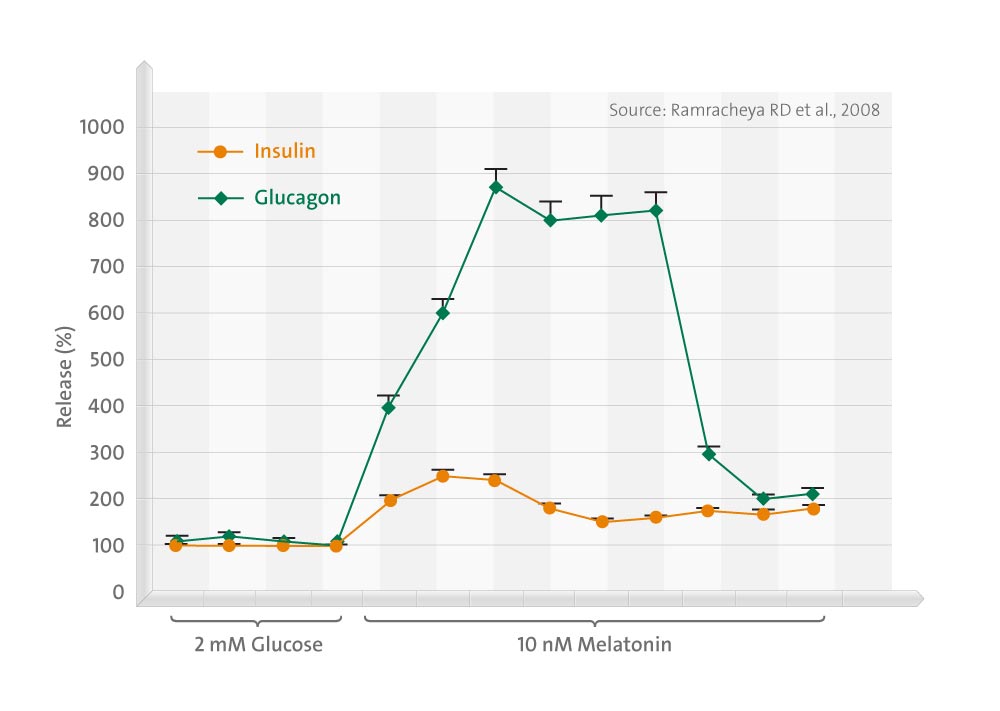Melatonin is known to inhibit insulin secretion from rodent beta-cells through interactions with cell-surface MT1 and/or MT2 receptors, but the function of this hormone in human islets of Langerhans is not known.
In the current study, melatonin receptor expression by human islets was examined by reverse transcription-polymerase chain reaction (RT-PCR) and the effects of exogenous melatonin on intracellular calcium ([Ca2+]i) levels and islet hormone secretion were determined by single cell microfluorimetry and radioimmunoassay, respectively. RT-PCR amplifications indicated that human islets express mRNAs coding for MT1 and MT2 melatonin receptors, although MT2 mRNA expression was very low.
Analysis of MT1 receptor mRNA expression at the single cell level indicated that it was expressed by human islet alpha-cells, but not by beta-cells. Exogenous melatonin stimulated increases in intracellular calcium ([Ca2+]i) in dissociated human islet cells, and stimulated glucagon secretion from perifused human islets. It also stimulated insulin secretion and this was most probably a consequence of glucagon acting in a paracrine fashion to stimulate beta-cells as the MT1 receptor was absent in beta-cells.
Melatonin did not decrease 3′, 5′-cyclic adenosine monophosphate (cyclic AMP) levels in human islets, but it inhibited cyclic AMP in the mouse insulinoma (MIN6) beta-cell line and it also inhibited glucose-stimulated insulin secretion from MIN6 cells. These data suggest that melatonin has direct stimulatory effects at human islet alpha-cells and that it stimulates insulin secretion as a consequence of elevated glucagon release.
This study also indicates that the effects of melatonin are species-specific with primarily an inhibitory role in rodent beta-cells and a stimulatory effect in human islets.
